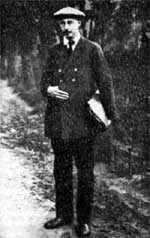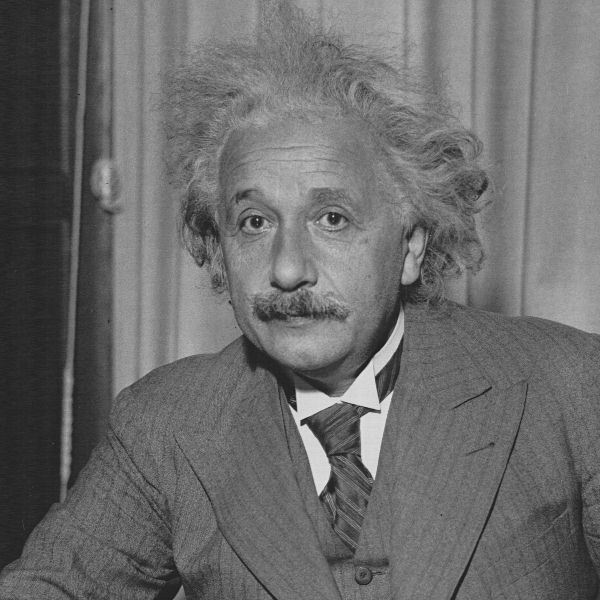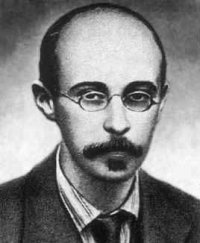Sequel of previous post : Static Solutions
In this series of posts about the history of relativistic cosmology, I provide an epistemological analysis of the developments of the field from 1917 to 2006, based on the seminal articles by Einstein, de Sitter, Friedmann, Lemaître, Hubble, Gamow and other main historical figures of the field. It appears that most of the ingredients of the present-day standard cosmological model, including the accelation of the expansion due to a repulsive dark energy, the interpretation of the cosmological constant as vacuum energy or the possible non-trivial topology of space, had been anticipated by Lemaître, although his papers remain mostly unquoted.
The Friedmann’s pioneering work
 In an article which appeared in 1922, entitled On the Curvature of Space (see Luminet 2004 for reference and translation), the Russian physicist Alexander Friedmann took the step which Einstein had balked at : he abandoned the theory of a static universe, proposing a “dynamic” alternative in which space varied with time. As he stated in the introduction, “the goal of this notice is the proof of the possibility of a universe whose spatial curvature is constant with respect to the three spatial coordinates and depend on time, e.g. on the fourth coordinate.“
In an article which appeared in 1922, entitled On the Curvature of Space (see Luminet 2004 for reference and translation), the Russian physicist Alexander Friedmann took the step which Einstein had balked at : he abandoned the theory of a static universe, proposing a “dynamic” alternative in which space varied with time. As he stated in the introduction, “the goal of this notice is the proof of the possibility of a universe whose spatial curvature is constant with respect to the three spatial coordinates and depend on time, e.g. on the fourth coordinate.“

Thus he assumed a positively curved space (hypersphere), a time variable matter density and a vanishing cosmological contant. He obtained his famous “closed universe model”, with a dynamics of expansion – contraction.
For the first time in the history of cosmology, the problem of the beginning and the end of the universe was couched in purely scientific terms. Friedmann also derived solutions with non zero cosmological constant, but pointed out that the term was superfluous. Contrarily to a current opinion, Friedmann’s work was not purely mathematical ; but he was honest enough to recognize that the available astronomical observations could not support his model : “Our information is completely insufficient to carry out numerical calculations and to distinguish which world our universe is. […] If we set lambda = 0 and M = 5 x 1021 solar masses, the world period becomes of the order 10 billion years.” It was a remarkable prediction, since the most recent estimate for the age of the universe is about 14 billion years.

Friedmann was not only a brilliant physicist, he was also a fervent orthodox catholic : for him, general relativity suggested creation of the world by God (although he did not formulated this statement in a published work).
Einstein reacted quickly to Friedmann’s article. In a short « Note on the work of A. Friedmann ‘On the curvature of space’ », he argued that « the results concerning the non-stationary world, contained in [Friedmann’s] work, appear to me suspicious. In reality it turns out that the solution given in it does not satisfy the field equations. »
 Of course Friedmann was disappointed. As he could not leave Soviet Union to meet Einstein in Berlin, he wrote an explanatory letter and asked his friend Yuri Krutkov to convince the famous physicist. The mission was apparently successful, since in 1923 Einstein published a still shorter « Note on the work of A. Friedmann ‘On the Curvature of Space’ », where he recognized : « In my previous note I criticised [Friedmann’s work On the curvature of Space]. However, my criticism, as I became convinced by Friedmann’s letter communicated to me by Mr Krutkov, was based on an error in my calculations. I consider that Mr Friedmann’s results are correct and shed new light. They show that the field equations admit, for the structure of spherically symmetric space, in addition to static solutions, dynamical solutions.»
Of course Friedmann was disappointed. As he could not leave Soviet Union to meet Einstein in Berlin, he wrote an explanatory letter and asked his friend Yuri Krutkov to convince the famous physicist. The mission was apparently successful, since in 1923 Einstein published a still shorter « Note on the work of A. Friedmann ‘On the Curvature of Space’ », where he recognized : « In my previous note I criticised [Friedmann’s work On the curvature of Space]. However, my criticism, as I became convinced by Friedmann’s letter communicated to me by Mr Krutkov, was based on an error in my calculations. I consider that Mr Friedmann’s results are correct and shed new light. They show that the field equations admit, for the structure of spherically symmetric space, in addition to static solutions, dynamical solutions.»
The statement did not mean that Einstein accepted the physical pertinence of dynamical solutions. Indeed, one can find in the original manuscript sent to Zeitschrift für Physik that the last sentence did not end as in the published version, but with a concluding disavowal « … to which it is hardly possible to give a physical meaning » !
 In 1924, Friedmann studied On the possibility of a world with constant negative curvature. He thus assumed a negatively curved space and time varying matter density, and derived the « open universe model », i.e. with a dynamics of perpetual expansion.
In 1924, Friedmann studied On the possibility of a world with constant negative curvature. He thus assumed a negatively curved space and time varying matter density, and derived the « open universe model », i.e. with a dynamics of perpetual expansion.
At the end of this article he had the first insight on a possibly non trivial topology of space : « The knowledge we have about the spatial curvature gives as yet no direct hint about the finiteness or infitineness. To definitely decide about its finiteness one needs additional conditions. As a criterion for the distinctness of points we may take the principle that two points through which more than one geodesic can be drawn are not distinct. It is clear that this principle allows the possibility of « ghosts »: objects and their own images occuring at the same point. This formulation of the sameness and distinctness of points implies that a space of positive curvature is always finite. However it does not allow us to settle the question of the finiteness of a space of negative curvature. »
Unfortunately, the article remained unnoticed, and Friedmann could never gain the satisfaction to see his theoretical models confronted to cosmological observations : he died prematurely in 1925 after an ascent on a balloon (as he was also a meteorologist).
The Rise of Big Bang Models (part 4) will follow.

Today, most believe that the Universe began with a Big Bangwhich occured about 14 billion years ago. At that time, the entire Universe was inside a bubble that was thousands of times smaller than a pinhead which was hotter and denser than anything we can imagine.
Bonjour monsieur Luminet,
Je voudrais vous poser une question au sujet de la détection des ondes gravitationnelles par Ligo. On sais qu’Hubble interpréta d’une façon erronée le décalage vers le rouge du spectre des galaxies comme un effet Doppler-Fizeau dû à une fuite des galaxies. On sait que cet effet est dû à l’expansion de l’univers (dilatation de l’espace) qui augmente la longueur d’onde et donc produit un décalage vers le rouge. Au passage d’une onde gravitationnelle, les bras de Ligo subissent un allongement et un raccourcissement (dilatation-compression de l’espace) ce qui provoque un signal à la sortie de l’interféromètre. Ma question est : pourquoi les ondes gravitationnelles ne provoquent-elles pas le même effet d’allongement et de raccourcissement de la longueur d’onde du laser dans les deux bras ? Si tel était le cas, les effet dimensionnels seraient les mêmes sur les bras et sur la longueur d’onde du laser, et détruisant tout signal d’interférence. Merci beaucoup
Merci de suivre mon blog anglais. Mais sur mon blog français j’ai posté 4 billets sur les ondes gravitationnelles qui devraient répondre à vos questions. Je vous suggère donc de lui rendre aussi visite (mis à part les billets d’Interstellar, mes deux blogs n’ont pas le même contenu).